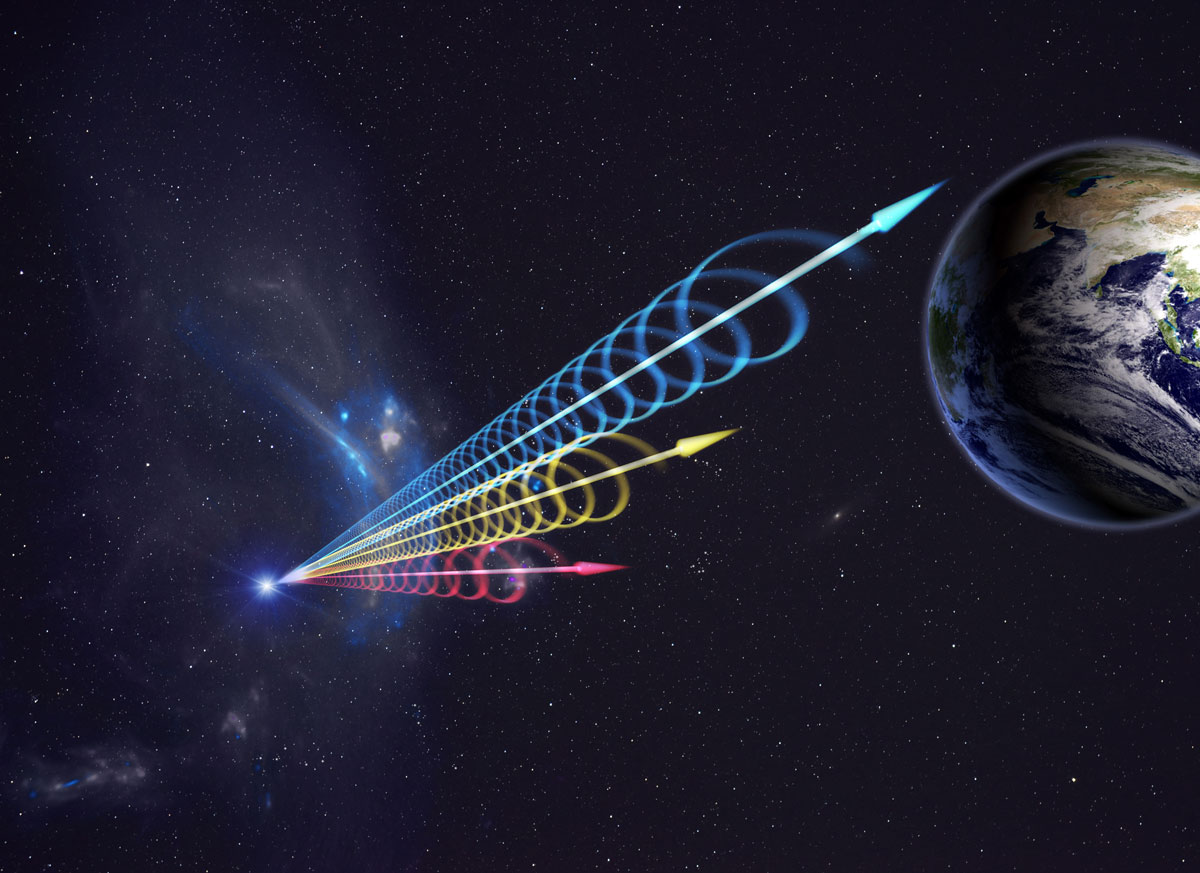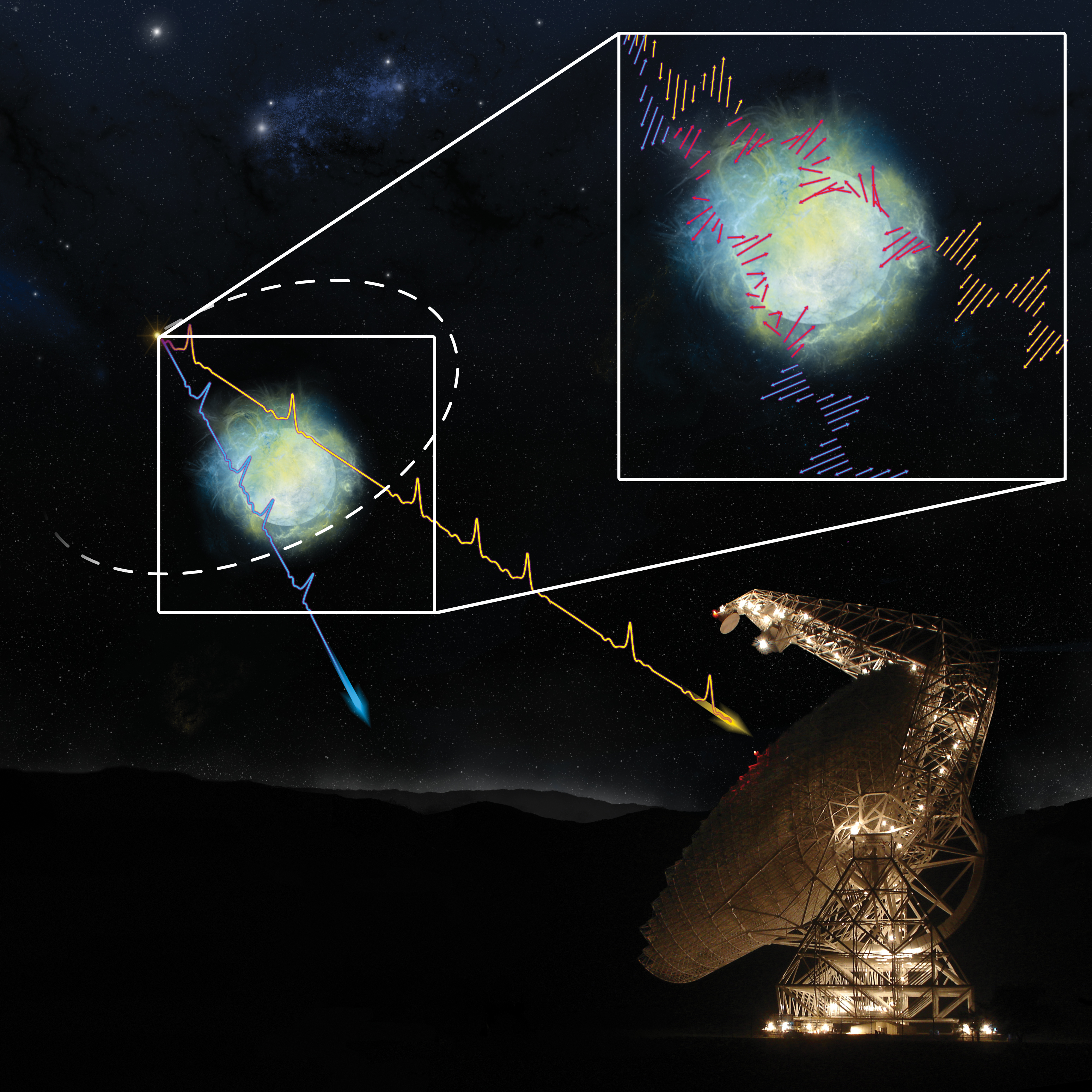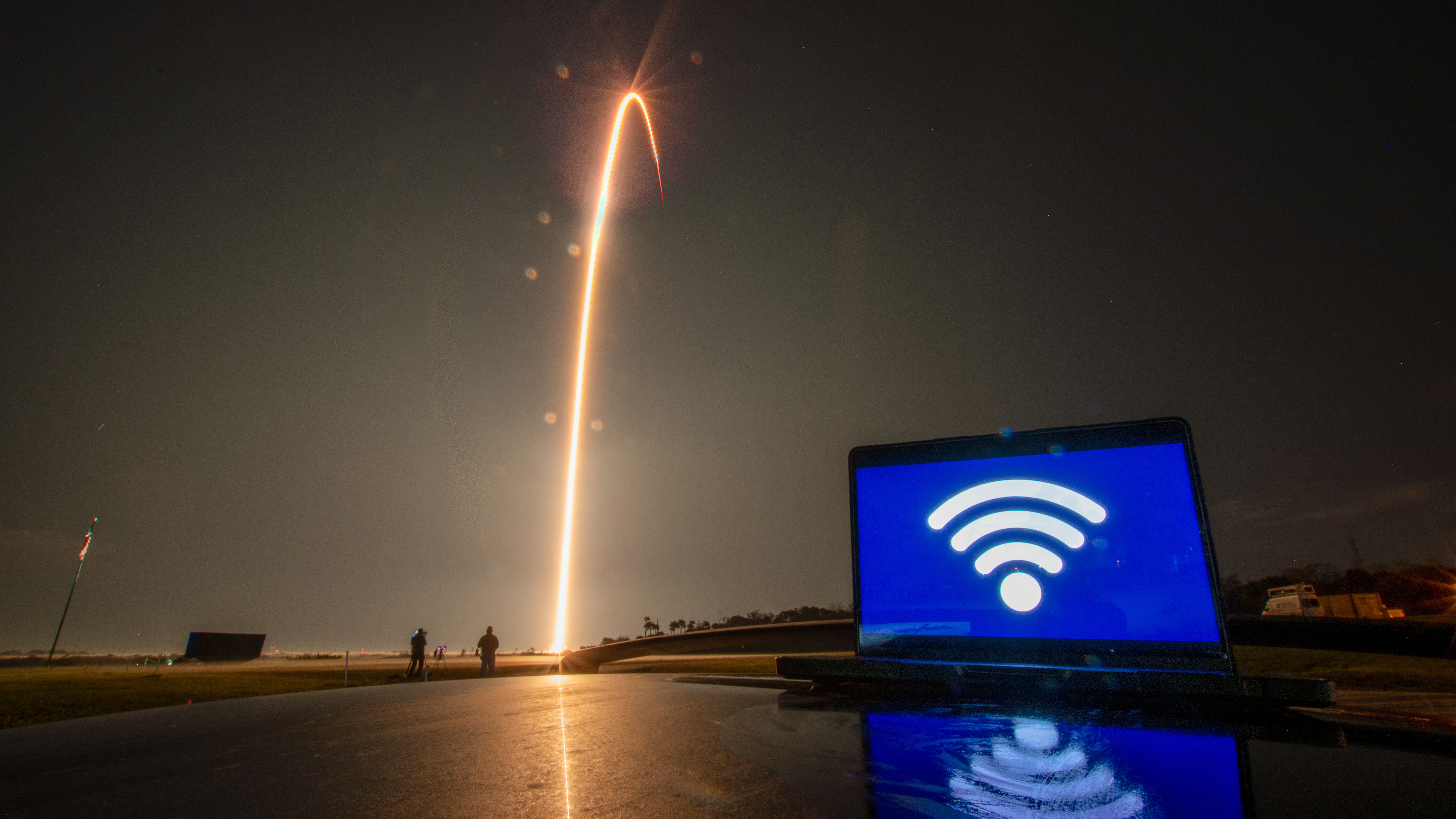Some mysterious 'fast radio bursts' may erupt from two-star systems
FRBs can produce more energy in mere milliseconds than the sun does in days.

Since scientists first discovered them some 15 years ago, fast radio bursts (FRBs) have remained mysterious.
Not much is known about these extremely powerful bursts of radio waves — in just milliseconds, they can produce more energy than the sun does over multiple days. But new research has just provided evidence that supports one theory about their origins.
An international team of researchers studying FRB 20190520B, an FRB residing in a dwarf galaxy about four billion light-years from Earth, has determined the most likely origin of this specific outburst is a dense object — potentially a neutron star — with a binary companion.
Related: Curious cosmic coincidence could help explain fast radio burst mystery

While most FRBs are short-lived, one-time events, FRB 20190520B is a "repeater" that bursts constantly across radio frequencies, making it an ideal target of long-term study. But that's not the only reason the team, led by Reshma Anna-Thomas of West Virginia University, selected FRB 20190520B for its research.
"The real motivating factor was its resemblance with a previously well-studied FRB, FRB 20121102A," Anna-Thomas told Space.com. "These two FRBs have an environment that is persistently emitting radio waves, which suggests that the FRB source is young. And FRB 20121102A is known to reside in an extremely magnetized plasma environment. So, we wanted to see if that's the same for FRB 20190520B. And if that is the case, what does it mean for the whole population of FRBs?"
Over the course of 17 months, the team watched FRB 20190520B closely using the Parkes Radio Telescope (also known as Murriyang) in Australia and the Robert C. Byrd Green Bank Telescope in the United States. Researchers observed high variability in the FRB's Faraday rotation — a change in the radio waves' polarization, which happens when it passes through magnetic fields. That variability indicated a highly turbulent magnetic environment at the FRB source.
Get the Space.com Newsletter
Breaking space news, the latest updates on rocket launches, skywatching events and more!
"Using the observed properties, we modeled these variations as due to a wind from a massive companion star, and this conclusion was strengthened by a system in the Milky Way that shows striking similarity to our FRB," said Anna-Thomas.
The team also considered alternative explanations, including FRB 20190520B passing through waves from a supernova or being located near a massive black hole — both scenarios could cause the Faraday rotation variability. But ultimately, the binary system theory had the most supporting evidence.
To unearth further evidence to support the binary system theory, researchers will continue to observe FRB 20190520B on a longer timescale — and at different observing frequencies.
"If it is in a binary, we expect the variability envelope of these observed properties to rise and fall as the orbital phase progresses, eventually settle down in an ambient value, and then repeat the same cycle," said Anna-Thomas.

Though most FRBs are not repeaters like FRB 20190520B, they do have similar energy scales, narrow-band emissions and temporal widths, noted Anna-Thomas. And as such, research into FRB 20190520B's origin may prove helpful in potentially determining the origins of other FBRs, too.
"It is possible that all repeating FRBs could be in a binary, but vary in local conditions, like binary orbital period, inclination of the orbit, et cetera," Anna-Thomas said. "Constant long-term monitoring of different observed properties of repeating FRBs, like their dispersion measure and Faraday rotation measure, may hold clues to solving this dilemma."
A paper about the team's observations was published today (May 11) in the journal Science.
Follow Stefanie Waldek on Twitter @StefanieWaldek. Follow us on Twitter @Spacedotcom and on Facebook.
Join our Space Forums to keep talking space on the latest missions, night sky and more! And if you have a news tip, correction or comment, let us know at: community@space.com.

Space.com contributing writer Stefanie Waldek is a self-taught space nerd and aviation geek who is passionate about all things spaceflight and astronomy. With a background in travel and design journalism, as well as a Bachelor of Arts degree from New York University, she specializes in the budding space tourism industry and Earth-based astrotourism. In her free time, you can find her watching rocket launches or looking up at the stars, wondering what is out there. Learn more about her work at www.stefaniewaldek.com.









